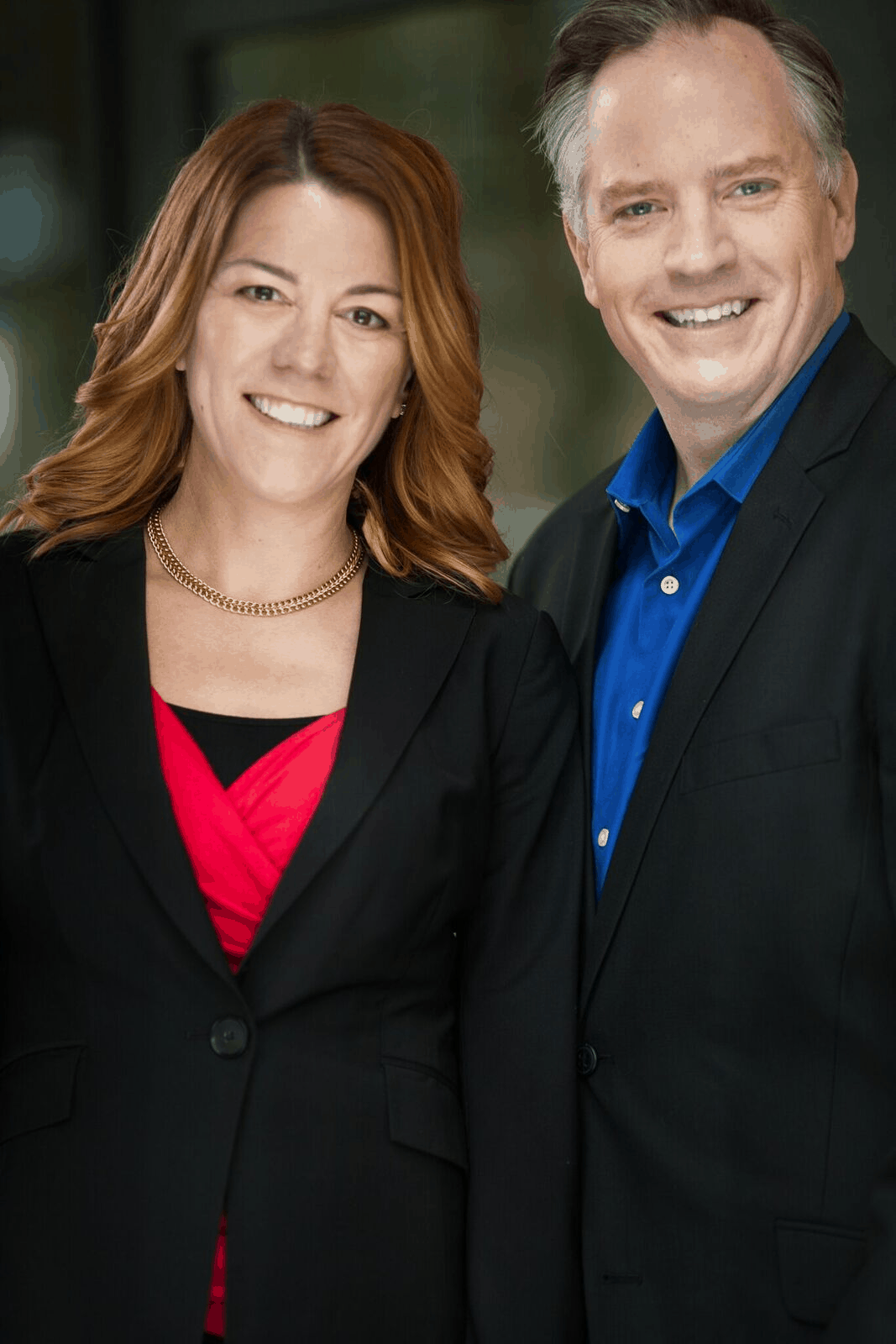Find the Team-Building Exercise that's right for your team.
Below you will find all the team-building exercises grouped by primary objective. Use the drop-down menus to sort activities by objective, time, group size, or several other qualities.
Vacation Exercise
Objective: Bonding, Communication Group Size: Small or medium group Time: 40 Minutes Materials needed: None Notes: Minimal Set Up, Inexpensive, Remote Teams Contributed by: Michael O'Brien of Peloton Coaching and Consulting

Partner off employees into teams, and lead the discussion. Inform both people that they should follow the following question example.
Person A shares with Person B where they wish to go on vacation (their dream trip).
Person B: "Yes, BUT..." as a critic to the destination
Person A: "Yes, BUT..." to defend his/her choice
It sounds like this:
Person A: I would love to go to Seattle
Person B: Yes, BUT it's really raining and grey there
Person A: Yes, BUT if I dress appropriately it will be fun
Person B: Yes, BUT traveling with all those extra clothes will be a pain
Give Person A about five minutes and then Person B shares their vacation spot. Follow the same, "Yes, BUT..." format.
Once Person B is done, switch the format. Now, the response is, "Yes, AND..."
It sounds like this:
Person A: I would love to go to Seattle
Person B: Yes, AND you can check out Pikes Place Market
Person A: Yes, AND I could to see that fishmonger who throws the fish
Person B: Yes, AND get some of the best coffee ever
Facilitation Questions:
1. How did it feel during the Yes, BUT approach? What about Yes, AND?
2. What emotions surfaced?
3. Where did you feel them most within your body?
4. What percentage of your conversations are YES, BUT each day?
5. What can you do to make more of your conversations YES, AND?
Recommended by Michael O'Brien of Peloton Coaching and Consulting, this is a great opportunity for employees to better understand each other, and really get a conversation going. It allows for bonding between unfamiliar coworkers and provides insight into the mindset of others.
Deluxe Offsite Retreats
Objective: Bonding, Establishing Values, Fun, Building Teamwork Group Size: Small to medium Time: Multiple days Materials needed: None (supplied by retreat company) Notes: Remote, Wow Factor, Team Building Contributed by: Sean Hoff, Moniker

Elaborate company retreats can take place at hotels, overnight camps and retreat-specific facilities. There are companies and travel agencies that will tailor activities to the company, ranging from puzzles to scavenger hunts, with some focusing on working together as a company and others dividing employees into teams for some healthy competition. These activities can range from simple to extremely complex. For example, an outdoor laser tag game called The War Game incorporating an entire resort property, a helicopter and trip wires as well as an Italian adventure themed to the "Italian Job" heist movie complete with role-playing locals.
That was a "truly one-of-a-kind activity that the group loved," said Sean Hoff of Moniker Partners. Company retreats are a great way to build relationships with colleagues while having fun. They also emphasize the importance of teamwork and communications. Strong bonds are formed, and great memories are made.
Question Master
Objective: Bonding, Values Group Size: Any Time: 30 minutes Materials needed: Questions Notes: Remote, Fast, Inexpensive, Minimal Set-Up
Select one person to be the question master. The Question Master starts by asking a thought-provoking question. This could be things like "What was the most challenging time in your life and why?" or "If you could go back to school for an advanced degree, what would you study and why?" Participants take turns answering. You can also have the team submit questions ahead of the meeting or call to add another layer of participation by the group members.
The activity promotes bonding and helps build camaraderie. It encourages remote team members to get to know each other better and allows team members to reveal pieces of themselves in a comfortable and safe environment. This a fun, simple way to build trust and bond with one another.
Human Bingo
Objective: Bonding, Teamwork, Icebreaker, Just for Fun Group Size: Small or medium group Time: 30 minutes Materials needed: Pens, paper Notes: Minimal Set-Up, Inexpensive Contributed by: Ed Tilley, Adventure Associates

Each player is given a Human Bingo card and a pencil. The card is a grid of 25 descriptive statements, such as: "Knows someone who is famous," "Has lived in five or more states/countries," and "Can hold a conversation in another language." Players must fill in the grid with names of people matching each description by asking questions of other players — they may not put down their own names. Answers must be elicited through questions and follow-up questions, rather than volunteered. In each exchange, only one statement may be successfully matched, but players may continue asking questions until they find an appropriate matching statement for that person. Once a matching statement is found, players must move on and may not revisit each other for three minutes.
"Getting to know one another is one of the most challenging parts of joining a newly formed team," said Ed Tilley ofAdventure Associates. "Not only are you unfamiliar with your fellow team members, but you don't share a common language for communicating with one another. Human Bingo provides a fun way for co-workers to get to know one another on a deeper level."
Life Highlights
Objective: Bonding Group Size: Any Time: 30 minutes Materials needed: None Notes: Minimal Set-Up, Fast, Remote Team, Inexpensive
This is a two-part exercise. To begin, a facilitator asks participants to close their eyes for one minute and think about the best moments of their lives. These could be professional accomplishments, personal memories or life adventures. When the minute ends, the facilitator tells the participants that their list of highlights must now be cut down to 30 seconds. Each participant must decide which 30 seconds they would most want to re-experience. In the second part of the activity, each participant is invited to tell the group about their 30 seconds.
The exercise prompts participants to reflect on their lives and encourages the understanding of other people's passions, motivations, and personal experiences. As such, it makes for a powerful lesson in team-building and communication. Since this exercise focuses on sharing memories and personal experiences, it may be most suitable for participants who are already well acquainted with one another.
Team Hike
Objective: Bonding, Just for Fun Group Size: Any Time: 30 minutes or more Materials needed: None Notes: Wow Factor, Outdoors, Inexpensive
This exercise simply involves going outside and exploring the surroundings as a team. It is best suited to groups who usually work in collaboration with each other. The term "hike" should not be taken literally — depending on location and team make-up, a walk through a scenic area of the city can be just as effective. While conversations should steer clear of specific work-related problems, this is a good time for participants to discuss new projects, bounce ideas off each other, and get their creative juices flowing.
The activity leads team members to interact and learn about each other in what may be an unfamiliar environment. Simply being in a new place can allow team members to see different sides of each other. It's also a good way to get away from workplace worries for a while. There's not much better than bonding over a tough hike (and snacks) in a slow sales month.
The Onion
Objective: Bonding, Communication, Values Group Size: 4-12 Time: 30 minutes Materials needed: Flip chart, pens Notes: Fast, Minimal Set-Up, Remote Teams, Inexpensive Contributed by: Michael O'Brien of Peloton Coaching and Consulting
The group sits around a flip chart, on which a facilitator draws a large pie chart with as many equal-sized slices as there are participants and above it writes a keyword such as "success" or "growth". Taking turns, each participant writes their interpretation of the keyword in one of the slices. These may be as precisely or loosely defined as participants choose. Once all the slices have been filled in, the group discusses and examines the varying interpretations of the keyword. The facilitator may also raise the question of why keyword interpretations differ across people performing different roles in the organization.
Recommended by Michael O'Brien of Peloton Coaching and Consulting, this game builds communication skills while providing an open space to discuss the aims of an organization. It may also offer valuable insights into how people define important but abstract concepts, such as "success." It is a good idea to allow employees from different departments and at varying levels of seniority to present their interpretations, and thus encourage conversations between chains of command.
Step Into Another Person's Shoes For a Day
Objective: Bonding, Teamwork, Appreciation Group Size: No limit, but minimum two Time: One hour to one day Materials needed: None Notes: Inexpensive, Wow Factor Contributed by: Jennifer Martin Zest Business Consulting

This exercise is best situated within a smaller office or a division-level group and is meant to include all staff. A facilitator simply assigns each person to take on the role of another for an hour, half-day, or day. For instance, a bookkeeper might serve as CEO, and a CFO might take over from a sales representative. The exercise is designed to provide everyone from upper-level managers to new employees with personal insights into the demands, challenges, and stresses of certain positions.
"This is a great in-office exercise created to deepen understanding of others on your team and gain insight and compassion for the work your associates do," said Jennifer Martin of Zest Business Consulting. "Until we have first-hand knowledge of what someone else actually does it's hard for us to truly appreciate the contribution they make to the organization. This can be a very eye-opening opportunity for some of your staff to fully appreciate others on your team."
Kidnap Your Boss
Objective: Bonding, Teamwork, Problem Solving, Just for Fun Group Size: Small or medium group Time: One hour Materials needed: None Notes: Wow Factor Contributed by: Chad Michael,Adventure Games Inc.

In this scavenger-hunt-style exercise, facilitators dressed as FBI agents interrupt a group meeting to reveal that the group's boss has been kidnapped by a notorious crime syndicate. The group is split into smaller teams who, armed with case files and equipment, must start by tracking down informants who will lead them to the hostage. Teams must handle a series of tasks and challenges — and the discovery that one of their number is a mole — to earn points, rescue their boss and take down the syndicate.
This highly customizable exercise "engages participants' strategic planning, execution, and communication skills in a fun and energetic atmosphere," said Chad Michael of Adventure Games Inc. "Participants hone their creativity and time-management acumen as they work together to crack the case, and get a real-time lesson in the challenges and benefits of collaborating under pressure. And finally, routing out the mole on the team provides valuable experience in determining trustworthiness, and in recognizing the ways in which individuals with their own agenda can sabotage a collaborative effort."
Mystery Weekend
Objective: Bonding Group Size: No limit, but minimum five Time: Two days Materials needed: Up to host Notes: Wow Factor Contributed by: Lori Revilla, Actors With a Clue!"

This interactive exercise has employees work in teams to solve a murder mystery. Facilitators construct an exercise that is part game, part drama, with participants solving puzzles while enacting their roles in the "murder." The game/performance is fully customizable and can feature any number of themes, settings, and participants. Facilitators can choose to have all participants be part of the show as "audience actors," or to let some simply enjoy the performance.
Lori Revilla of Actors with a Clue! said this exercise can be designed to last anywhere from a few hours to an entire weekend and makes for an exciting weekend retreat activity. A great bonding experience for all involved, it tests problem-solving and collaborative skills under pressure while incorporating a fun dramatic element. Since developing such a complex exercise can be challenging, a number of companies offer to host and enact mystery weekends.
Whose Office Is It, Anyway?
Objective: Icebreaker, Bonding, Fun Group Size: No limit, but a minimum of three Time: 30 minutes Materials needed: Computer, smart phone Notes: Inexpensive, Minimal Set-Up, Fast, Remote Teams
Team members send a photo of their home office to the team leader or facilitator. The facilitator shows the group a picture, and the group has to guess whose home office it is. Participants are encouraged to state why they thought a certain office belonged to a specific team member. For other variations of the game, you can also repeat for other items, such as coffee mugs, desktop backgrounds, etc. This activity works well with remote teams gathering on video chat.
This activity allows colleagues the chance to get to know each better and bond. It fosters cooperation and encourages better communication. It's also great for destressing and having fun.
Best and Worst
Objective: Icebreaker, Communication, Bonding Group Size: Medium group Time: One hour Materials needed: None Notes: Minimal Set-Up, Fast, Inexpensive, Remote Team
In this exercise, a facilitator has each participant write down one "best" question and one "worst" question. It's a good idea for questions to elicit funny answers: For example, participants may ask, "What's the worst trip you've ever been on?" or "What's the best chick flick you've ever seen?" These questions are collected and put into a "best" hat and a "worst" hat respectively, and team members take turns drawing and answering questions from each hat.
This simple icebreaker helps people loosen up and is especially suited to new teams and teams who work remotely and rarely meet in person. For new teams, it can help develop working relationships and spark conversations. For teams who work remotely, it is a great opportunity to learn about people they rarely meet.
Three Truths and a Lie
Objective: Icebreaker Group Size: Medium group Time: 30 minutes Materials needed: Pens, paper Notes: Fast, Minimal Set-Up, Inexpensive, Remote Teams Contributed by: Tom Borg of Tom Borg Consulting
A facilitator has participants form groups of five. On a sheet of paper, each group member lists three things about themselves that are true and one that is believable but false, without revealing which one is the lie. Each person then shares the four things about themselves, and the group members vote for the one they think is the lie. After the votes are counted, the person reveals the lie.
"This exercise is effective because it helps people break down preconceived notions about each other and it allows the participants to build an awareness of the things they do have in common," said Tom Borg of Tom Borg Consulting. "Tip for making it successful: in your debriefing after the exercise summarize what people learned about each other's similarities and differences and discuss how it relates to their workplace."
Friendly Fliers
Objective: Icebreaker Group Size: Any Time: One hour Materials needed: Pens, paper Notes: Minimal Set-Up, Inexpensive
A facilitator splits the group into pairs and asks each pair to make a paper airplane. After making the plane, each pair writes a few characteristics that define them on its wings. The facilitator then collects all the planes and launches them to see which flies the farthest. Starting with the plane that travels farthest, the facilitator reads out the characteristics on each plane's wings, and the group must try to guess which pair built each plane.
This exercise fosters creativity within teams while helping them learn more about each other. It can be used with both newly formed and existing groups: One useful variant involves pairing individuals who work closely together and having them write the characteristics that define their working relationship. This provides valuable insight into what people appreciate about existing work relationships.
Helium Stick
Objective: Icebreaker, Teamwork Group Size: Medium group Time: 15 minutes Materials needed: A stick Notes: Fast, Minimal Set Up, Inexpensive
The facilitator divides the team in half and arranges participants in two rows facing each other. Each person their right hand out at chest-height, index finger extended. After placing a long, thin rod (such as a dowel) on top of the outstretched fingers, the team together lowers the stick to the ground, without anyone losing contact with the stick. The stick has a habit of mysteriously floating up rather than coming down. (The secret is that the collective up pressure from people's fingers tends to be greater than the weight of the stick. As a result, the more a group tries, the more the stick tends to float and become a "helium" stick.
This is a great game to boost energy and loosen people up. It is easy to play and a great way to get the whole group engaged and working together as a team.
Dare Jenga
Objective: Icebreaker, Just for Fun Group Size: Small Group Time: 30 Minutes Materials needed: Jenga Notes: Minimal Set-Up, Fast, Wow Factor, Inexpensive
The facilitator will write a (clean) dare on each of the Jenga blocks such as "Sing Twinkle, Twinkle Little Star" and "Do 15 Pushups"). The team plays a normal game of Jenga, with each team member having to perform the dare that is written on their chosen block.
This is a fun game to break down barriers and break the ice between coworkers. No matter where you are in the company, this is a fun game for all to enjoy. Make sure to make the dares fun and appropriate to avoid awkward or embarrassing moments.
Wad Ball
Objective: Icebreaker, Teamwork Group Size: Any Time: 30 Minutes Materials needed: One brown bag, one roll of packing tape Notes: Minimal Set-Up, Fast, Wow Factor, Outdoors Contributed by: Myles Nye, Wise Guys Events

Crumple the brown bag into a ball and wrap tape around it so it keeps its shape. It will be lumpy and irregular, which means the ball will move and behave in unpredictable ways, and also makes it seem less like a "sport" with a ball. One player hits the ball with an open palm and say the first letter of the alphabet, "A". The next person hits the ball, keeping it in motion and saying, "B." This repeats, with each successive player who hits the ball saying the next letter of the alphabet. The only rules are that the same person cannot hit the ball 2 times in a row, and, if the ball hits the ground, you start over again at "A". The object of the game is to get all the way to "Z".
Myles Nye of Wise Guy Events said that the best approach is to give as little guidance to participants as possible. "The team will discuss and try various tactics and adjustments. As long as they follow the rules, they can try anything they want to get to Z. This exercise is a great metaphor for how a group of people can sometimes 'let the ball drop,'" Nye said. "This game is not suitable for rooms with very low ceilings or expensive Ming vases strewn about."
Classification Game
Objective: Icebreaker, Values, Bonding Group Size: Small Group Time: 15 Minutes Materials needed: None Notes: Minimal Set-Up, Fast, Inexpensive
Split participants into teams of four people. Discuss the concept of pigeon-holing, which means classifying or stereotyping someone. Explain how this type of classification is subjective and judgmental. Tell participants to introduce themselves to their teammates and discuss some of their likes, dislikes, etc. Instruct them to classify themselves, as a team, into two or three subgroups, into categories that contain no negative, prejudicial, or discriminatory judgments. Examples of these subgroups can include night owls and morning people, pineapple pizza lovers and sushi lovers, etc.
This activity encourages coworkers to know each other better and prompts them to consider the nature of all individuals within the team. It allows them to think outside restrictive pigeon holes and work together to accomplish a single goal.
The One Question
Objective: Icebreaker Group Size: Small to Medium Group Time: 15-20 Minutes Materials needed: None Notes: Minimal Set-Up, Fast, Inexpensive
After pairing participants into teams, the leader poses this question: "If you could ask just one question to discover a person's suitability for (insert topic here), what would your question be?" For example, if the leader chooses to go with a marriage, each person in a two-person team comes up with a single question that would help them discover whether or not their partner is suitable to be married to them. This icebreaker can be varied by giving the entire group one situation or assigning a different situation to each team member or pair to work on.
The activity spurs critical thinking and collaboration. It not only gets coworkers talking to each other, but it also gets them working together.
Back-to-Back Drawing
Objective: Communication Group Size: No limit, but minimum of four Time: 30 minutes Materials needed: Pencil or pen and flip chart or paper Notes: Inexpensive, Minimal Set-Up
Divide the group into pairs. Each pair needs to sit on the floor with their backs to each other. One partner will be the person drawing and the other partner will verbally instruct the person. The non-drawing partner is given a common shape. They are not allowed to tell them what the shape is; they have to describe it. Once time is up (30 seconds to one minute), they discuss how close the drawing is to the shape requested. You can start off with simple shapes like circles and squares and go on to more complex ones.
This game showcases communication as a vital tool in the workplace. It promotes listening, communication and patience. It will also have the whole room laughing.
Survival Scenario
Objective: Communication, Teamwork, Problem Solving Group Size: No limit, but minimum of two Time: One hour Materials needed: None Notes: Inexpensive, Minimal Set-Up
Bring the group together and introduce the survival scenario. For instance, you can explain that the airplane they are on has crashed in the ocean. There is a desert island a few miles away, and there is room on the lifeboat for every person and 12 other items. They are to choose which items to take. This can be done with a premade list of items, or you can have them brainstorm their own 12 items.
This game works on communication skills within a group. It also helps facilitate out-of-the-box thinking. This exercise also allows teams members to get to know each other better and get to know what team members value and put a level of importance on.
Color Pumper Transport
Objective: Communication, Problem Solving, Teamwork Group Size: Under 100 participants Time: Three hours Materials needed: Pumps, drills, y-valves, PVC pipes, joints, tools, tubing Notes: Contributed by: Darrell B. Rush, Direct Effect Team Building

Divide the participants into teams with 10 members each. Each team is challenged to build a Color Pumper Transport machine meeting specific requirements. Each team is provided with "seed money" (an imaginary $5,000). All of the building materials required to build the machines (tubing, electric pumps, tubing, valves, pipes, joints, tools...) must be purchased at the game's store. Teams are provided with four one-gallon liquid containers, each filled with a different color of fluid. The game board is a large plastic mat with 12 spots where color fluid should be placed. Using the given resources, teams must purchase, design and build a system according to project specifications. The Color Pumper machines must allow the operator to transport any color or color combination to any of the 12 depository spots on the game mat within a certain time limit.
"The ultimate team engineering challenge, Color Pumper Transport is a fun and colorful simulation exercise where skillful strategic planning, strategic building and effective communication are criticalto success," said Darrell B. Rush of Direct Effect Team Building"The game serves as an excellent metaphor for the processes of product design, change management, bringing regions, or, franchise partners together, team decision making, sharing information, positive communication and cross-training peers or customers on a "user friendly" system designed through effective teamwork."
Mine Field
Objective: Communication, Problem Solving Group Size: Small group Time: 30 minutes Materials needed: Bottles, cans, cups, or anything that can be used as a hazard Notes: Fast, Minimal Set Up, Inexpensive, Outdoors
Locate and secure an open space, preferably outside, for this activity. Set out the mines, or cups of water, paint, and slime, at random. Participants are paired off into teams of two, and one member of each team is then blindfolded. The blindfolded person must make their way from one side of the space to the other without stepping on any "mines" solely by listening to the instructions of their partner. If a mine is stepped on, they need to start over.
This exercise fosters listening and utilizing effective communication strategies. The nature of the activity is designed to improve communication and trust between team members. This activity also demonstrates how we can depend too much on the sense of sight and helps participants really focus on listening and effective communication strategies.
One Question
Objective: Communication, Problem Solving Group Size: Small groups Time: 15 minutes Materials needed: None Notes: Fast, Minimal Set Up, Inexpensive
Present a scenario where someone needs to be hired for a position. For example, you could be hiring a babysitter, a driver, a chef, or a housekeeper. Each participant then gets to ask only one question to determine whether that person is right for the job. The group can discuss the pro and cons of each question.
This is a quick game that promotes a cooperative and friendly work environment. It fosters communication while learning about the values of others. The team members learn more about one another, which allows them to utilize each team member's strengths and weaknesses.
Bridge Build
Objective: Communication, Problem Solving Group Size: No limit, but a minimum of two Time: One hour Materials needed: Cardboard and duct tape Notes: Inexpensive
Divide the participants into two teams. Give each team materials and instruct them to build a bridge, with the partnering team completing the other side of the bridge. During construction, the teams may not see each other's design. They must use other communication skills, both verbal and nonverbal, to build an identical bridge.
This is a great activity for developing and fostering communication skills, creative thinking, and problem solving. It is a fun, teamwork-based activity that people will enjoy.
Sneak A Peek
Objective: Communication, Problem Solving Group Size: Medium to large groups Time: One hour Materials needed: Building blocks Notes: Inexpensive, Minimal Set-Up
Arrange the participants into groups of four or five, then build a sculpture hidden from the rest of the group. One team member is allowed 10 seconds to memorize the sculpture and describe it to the rest of their team. With just this information, the team must try to build a replica. If they fail to build the structure, the next team member can come sneak a peek, and so on. The game continues until a team correctly emulates the facilitator's structure.
This is a simple game that fosters group problem solving skills and encourages effective communication. It is a fun exercise that also promotes attention to detail and careful observation.
Room Escape
Objective: Communication, Problem Solving, Teamwork Group Size: Any Time: 90 Minutes Materials needed: Escape Room Company Notes: Wow Factor Contributed by: Genevieve West, Hour to Midnight Room Escape Games, and Nate Martin, Puzzle Break

There are escape room companies that will stage this game for you or you can DIY it. Your team is locked in a room together, and they have just one hour (or more, depending on the company) to solve clues and puzzles to open the door. The escape room company you choose provides everything the team will need for a memorable and productive team building, making them simple to plan for your group.
You can also stage a do-it-yourself version of an escape room. What begins as a typical PowerPoint seminar leaves your presenter outside the room and employees locked inside with a simple set of instructions: solve puzzles to get out. The team has one hour to follow clues and complete puzzles and riddles until the key is found.
"Escape rooms are a unique team bonding experience, giving each team member opportunities to be an essential part of the solution," said Genevieve West of Hour to Midnight Room Escape Games. Team leaders have a chance to practice following others, and those who are comfortable in the background get a chance to shine. Adds Nate Martin of Puzzle Break: "Teams must work together on common objective using nothing but their wits and the power of teamwork." The team gets to practice communicating effectively, thinking creatively, collaborating together, and delegating tasks, all while laughing and having fun together, making escape rooms a real bonding experience for your team.
Concentration
Objective: Communication Group Size: Any size Time: 15 Minutes Materials needed: None Notes: Fast, Minimal Set Up, Inexpensive
Divide the group into teams. The teams form two even lines, facing one another. Give all participants a minute to study their partner, then have one line turn around. The other line now has 40 seconds to change 10 things about themselves – like changing hairstyles, tying scarves differently, swapping watches to the other hand. After 40 seconds, the other line turns back around and has to identify all the changes. This continues until the game ends.
This game tests communication abilities and also serves as a fun icebreaker. It requires participants to pay great attention to detail and focus on things they might not normally have to focus on.
Classify This
Objective: Communication Group Size: Medium group Time: 30 minutes Materials needed: Random objects Notes: Fast, Minimal Set Up, Inexpensive, Fast
Split your team into small groups, and have the groups categorize the random objects into different families. Have each group write down their categories within 10 to 15 minutes. Then have each group present their categories to the rest of the team, explaining the reasons behind their categories.
This is a quick, fun activity that encourages teamwork and communication. It highlights that there are many different ways of seeing things and that there isn't always one right answer.
Blindfold Rope Square
Objective: Communication, Problem Solving Group Size: Small group Time: 30 minutes Materials needed: Blindfolds, rope Notes: Fast, Minimal Set Up, Inexpensive
Find a safe, clear area, blindfold all participants and have them turn around a few times. Place the rope across the length of the floor, and tell the team they need to work together to make a perfect square out of it.
This is a short exercise that helps small groups learn how to communicate without visual cues or being able to monitor progress. It is centered on problem-solving skills and the ability to work together as a team.
Birthday Lineup Communication
Objective: Communication, Problem Solving Group Size: Medium group Time: 30 minutes Materials needed: None Notes: Fast, Minimal Set Up, Inexpensive
Quickly tell team members to get in line in order of their birthdays, without talking or writing anything down. Team members have to come up with a way of communicating their birthdays with each other wordlessly, before commencing the lineup.
This simple activity tests everyone's ability to communicate and solve problems quickly. Each person plays an important role within the bigger task, and it's a fun way to remember when everyone has their birthday.
Activity: Dance Lessons
Objective: Comfort Zone, Just for Fun Group Size: Any Time: 30 minutes Materials needed: Dance instructor Notes: Fast, Wow Factor
Have your division or team take dance classes together, either at a dance studio or with an instructor coming to your facility.
This activity requires people to let their guard down. It is a fun and highly effective way to bring people together. This is also a shared experience that they will talk about and remember.
Karaoke
Objective: Comfort Zone Group Size: Any Time: One hour Materials needed: Karaoke machine Notes: Fast, Wow Factor, Minimal Set Up, Remote
Rent or borrow a karaoke machine, or plan the event at a local establishment that offers karaoke. Invite employees to participate in a karaoke song, either by themselves or in a group. It can also be adapted to remote teams by doing it online via video chat.
This is a great activity that can serve as a way to get your team out of their comfort zone. It allows team members to show their personality and talents, while also fostering cooperation and team building. This activity will create memories and friendships that will benefit the team productivity and cohesiveness.
Appreciation Exercise
Objective: Appreciation Group Size: No limit, but minimum two Time: 20 minutes or more Materials needed: None Notes: Inexpensive, Minimal Set-Up, Fast
A facilitator divides the group into pairs, and participants sit facing each other. Each person has two minutes to tell their partner what they appreciate about them. Pairs must maintain eye contact while speaking, and the person receiving appreciation may not speak except to say "Thank You" when their partner finishes speaking or time runs out. To end the exercise, the facilitator brings the group together for a discussion and debrief. The facilitator may ask participants how it felt to give and receive appreciation, and whether they heard anything that surprised them.
The appreciation exercise is designed to foster a culture of trust, to build connections between team members, and to teach employees to give and receive appreciation. It is easy to conduct anywhere and can help boost job satisfaction.
Give a "Kiss" of Appreciation
Objective: Appreciation Group Size: Any Time: 5 – 15 minutes Materials needed: Hershey's® Kisses Notes: Inexpensive, Minimal Set-Up, Fast
Get a supply of Hershey's® Kisses and have each person take three Hershey's® Kisses. Explain that one is for them to enjoy, and the other two are to give to people in the room who have had an impact on them, whom they enjoy working with, etc. Optional: After handing out the candy, ask the team some of the following questions:
How did it feel to receive a Kiss?
How did it feel to give a Kiss?
Were there any surprises?
How can we ensure that everyone is recognized and appreciated for their contributions?
This activity helps strengthen the team by having members show their appreciation for others' contributions, while reinforcing how important each person is to the team's success.
New Manager Assimilation
Objective: Values, Icebreaker, Teamwork, Group Size: No limit, but minimum of two Time: Two hours Materials needed: None Notes: Inexpensive, Minimal Set Up Contributed by: Peter Phelan of ValuesCulture

The process involves two 60-90 minute meetings scheduled in the first week of the new manager's tenure. In the first meeting, the new leader spends 20 minutes explaining why they're excited to be in the role, how their career brought them to this point, what they see as the opportunities and challenges in the role, and the kind of manager they think they are. Then, the facilitator excuses the new manager and the team continues working together without the new manager in the room. The work is centered on providing collective answers to questions about what the team needs from a manager and what they see as the opportunities and challenges in the new manager's role and in the broader business. The team also articulates, in an anonymous environment, what else they'd like to know about the new manager that hasn't already been shared. The findings of the first meeting are shared with the new manager, who has several days to digest the feedback. Then, in the second meeting, they respond to the entire team with their thoughts on the information the team shared and provide answers to the additional questions generated.
Peter Phelan of ValuesCulture said, "A team receiving a new manager is a really big deal. The new leader's arrival can generate a lot of anxiety in the team for the first few weeks or months - as people invest a lot of time in studying and analyzing the new boss's every move to find out 'what makes them tick.' Based on work that was developed at GE - the New Manager Assimilation Exercise is very powerful and extremely popular in the Silicon Alley start-up circles."
Values Assessment
Objective: Values, Communication Group Size: Any Time: Half Day Materials needed: Values-based assessment, flip chart, pen Notes: Minimal Set Up, Inexpensive Contributed by: Tina Mertel of Meaningful Coaching

Each team member completes a values assessment like this one to learn about the values they hold and what really drives them. Then, in a facilitated session, participants share their answers, learn about each other and learn to communicate in ways that prevent conflict from happening on the team. Possible questions to discuss include:
How would you be more open to change?
What is the best way to influence you?
What brings you the most conflict?
"Why this is so effective is that many people don't realize that the values we hold can start conflict with others," noted Tina Mertel of Meaningful Coaching. "One workshop example is a manager that everyone thought was arrogant and ruthless - a real thorn in the team's side. It wasn't until we went into the exercise that we all learned that he pushes himself hard because he values being the only family member to have gone through college and not be on welfare. He shared the reason for his drive was so that his children would learn that anything is possible and that options are available. The entire team in that moment had compassion for this manager, and the manager's behavior changed to be more approachable after that moment....Everyone leaves with a game plan on how to recognize others' values, and better communicate to each team member."
Coat of Arms
Objective: Values, Communication Group Size: Any Time: 30 Minutes Materials needed: Pens, markers, paper, posterboard Notes: Minimal Set-Up, Fast, Inexpensive
Have teams draw a coat of arms for your company. In one section of a crest, they should draw something that represents a recent achievement. In the second space, put something that symbolizes company values. In the third space, they should draw something that represents what they see as the future direction of the organization. Post the finished coat of arms posters in your office.
This activity allows for creativity while also strengthening employees' abilities to work as a team. Most importantly, it reinforces a united front with the employees going forward.
Write a Manifesto
Objective: Values, Bonding Group Size: Small or medium group Time: One hour Materials needed: Sticky notes, easel, paper, markers Notes: Inexpensive, Fast, Minimal Set-Up Contributed by: Karin Hurt and David Dye of Let's Grow Leaders

A facilitator breaks the group into teams, and each team member identifies and writes down an aspirational behavior based key values in the organization's culture. The team then works together to group behaviors by theme and to debate the most important behaviors, which in turn form the basis for a team "manifesto." To do this successfully, the team must discuss what it means to behave in line with company values, and what gets in the way of implementing their manifesto.
Karin Hurt and David Dye of Let's Grow Leaders recommend basing the activity on the four components of their Winning Well model:Confidence, Humility, Results and Relationships. "The conversation is powerful as the team begins to break down questions such as 'What does it really mean to behave with confidence here?' 'What gets in the way of us behaving in the way we say we want to?'" noted Hurt. "We've done this work with a wide variety of companies from start-ups to the United Nations. It works because it gets the team talking about, and committing to, the concrete behaviors necessary for breakthrough success, as well as concrete action plans to improve team functioning."
Push-Up Ritual
Objective: Values, Just For Fun, Bonding Group Size: Any size Time: 5 minutes Materials needed: None Notes: Fast, Minimal Set Up, Fun, Wow Factor, Remote
Make a daily or multiple times a day ritual. For example, at some companies, everyone drops down and does 20 push-ups together. You can even add a motivating theme song. Even remote team members can participate.
This creates a positive energy in the workplace. It offers a mental break for employees while providing brain-stimulating exercise and a sense of camaraderie.
Lost at Sea
Objective: Teamwork, Problem Solving, Leadership Group Size: 2-50 Time: One hour Materials needed:Lost at Sea worksheets Notes: Minimal Set-Up, Inexpensive
For this exercise, the facilitator works from a Lost at Sea toolkit— several are freely available online. The group is divided into teams of three or four people, and each team is asked to imagine that they chartered a yacht to sail across the Atlantic but had to abandon ship after a galley fire. Each team escapes with a lifeboat, a box of matches, and 15 items. Team members first individually rank the 15 items in order of importance and then confer with their teams to create a revised set of team rankings. The individual and team rankings are compared to rankings provided by the U.S. Coast Guard. Scores are assigned based on how much rankings differ from those of the Coast Guard, with lower scores indicating better results.
This exercise pushes teams to work methodically and think analytically to solve a problem. It highlights how teamwork can produce better results than working alone. The facilitator may ask teams why the individual and team rankings differed and how teamwork prompted individuals to change their minds.
Picture Pieces
Objective: Teamwork, Problem Solving Group Size: Small or Medium Time: 30 minutes Materials needed: Image, pens, paper Notes: Inexpensive, Minimal Set-Up, Fast
In preparation for this exercise, a facilitator chooses a well-known, detailed image and cuts it into as many equal-sized squares as there are participants. At the start of the exercise, each participant is given a puzzle piece and asked to reproduce it five times larger. Participants should not yet be told that their piece was part of a larger whole. The facilitator then asks the group to convene and use the magnified reproductions to assemble an image five times larger than the original.
This problem-solving exercise teaches participants to work in a team and demonstrates "departmental" working: the concept that each individual contributes to a larger team effort, even though their contribution may not always be apparent. The exercise works best when it involves participants from a number of organizational departments who perform a variety of roles.
Scavenger Hunt
Objective: Teamwork, Problem Solving, Just for Fun, Leadership Group Size – Any Time: 2 hours Materials needed: Materials specific to activities in the hunt Notes: Wow Factor, Outdoor Contributed by: Andrew Long,Scavenger Hunt Anywhere

In this activity, the group is divided into teams. Each team is presented with a list of tasks in various categories such as: trivia, photos and checkpoints. Most scavenger hunts are completed on foot and will usually last between 90 minutes and four hours. Each task is worth points, and the team with the most points wins. When time runs out, the results of the hunt are calculated and announced. Recent advances in technology, especially smartphone apps, have led to new capabilities such as instant calculation of results, downloadable photos, live leaderboards, new task types such as voting tasks and custom maps.
"A scavenger hunt is a valuable activity for the participants because it is a challenge of many team and business skills," explained Andrew Long of Scavenger Hunt Anywhere. "Indeed, this is part of the design. Teams will be more successful if they are good at prioritization, planning and strategy, allocating roles on the team, thinking outside the box, working as a team and sometimes even collaborating with other teams."
Tallest Tower
Objective: Teamwork, Problem Solving Group Size: Medium group Time: 15 minutes Materials needed: Sets of Lego blocks, timer Notes: Fast, Minimal Set Up, Inexpensive Contributed by: Arquella Hargrove, ArquellaHargrove.com

The facilitator divides the group into teams. The game is divided into three rounds, with a debrief between each round. During round one, all team members work individually to build the tallest Lego tower. For this first round, the team members are not allowed to communicate. They have three minutes to complete the task. After the three minutes, debrief with the team and asking the following questions:
What was it like building the tower without being able to communicate?
What was it like building the tower while working solo?
If you could do it over, what would you do differently?
Round Two: Divide team members into several group teams with the same task –to build the tallest tower using the Legos. The group members can communicate in any form or fashion. The team members have three minutes to complete the task. After the three minutes, debrief with the team and asking the following questions:
What was it like building the tower while being able to communicate freely?
What was it like building the tower while working on a team?
Did anyone step up to be the leader of the larger team? If so, how did it work out for everyone else or the overall team?
If you could do it over, what would you do differently?
Round Three: All team members come together as one large team with the same task – to build the tallest tower using the Legos. The large team can communicate in any form or fashion. The team members have three minutes to complete the task. After the three minutes, debrief with the team and asking the following questions:
What was it like building the tower while being able to communicate freely?
What was it like building the tower while working on a larger team?
Did anyone step up to be the leader of the larger team? If so, how did it work out for everyone else or the overall team?
If you could do it over, what would you do differently?
This exercise enhances teamwork and communication skills among new and/or existing teams of colleagues. They learn to communicate effectively, whether verbally or not, delegate if necessary, and come together to reach a common outcome for successful results. It also allows them to tap into their creativity and play on each other's strengths.
Egg Drop
Objective: Problem Solving, Teamwork Group Size: Any Time: Two hours Materials needed: Eggs, cardboard, duct tape, straws, paper Notes: Inexpensive, Wow Factor
The facilitator divides the team into several even groups of about five people. Each team receives an egg and the same supplies. Choose a spot that's about 15 feet off the ground and easy to clean. Teams are tasked with building something that will protect their egg when dropped from that height. After design and build time, the teams gather to watch how each team's design performs.
This task allows employees to not only problem solve, but also work on communication within the workplace. It is also fun to see which teams end up with egg on their faces and which don't!
Coriolis Effect
Objective: Problem Solving Group Size: Small or medium group Time: 1 hour Materials needed: Plastic Pipes, one small ball, timer Notes: Inexpensive
This activity is named for the inertial force known as Coriolis force, which acts on objects that are in motion relative to a rotating reference frame. The facilitator divides up the group into teams. Each team gets into a circle, and each person receives a piece of plastic pipe. Starting with the tallest person, the ball is passed around the circle, clock-wise, via each piece of pipe. These rules must be followed:
No pipe can be skipped.
Pipes can't touch.
Everyone's pinkies must be touching at all times.
Individuals can only touch their own pipes.
The ball cannot be touched as it travels.
If the ball falls, the process starts over.
Problem solving and communication are at the forefront in this game, and it forces all team members to work together. In addition, concentration is tested, and friendships are forged.
Human Knot
Objective: Problem Solving, Teamwork Group Size: Small or medium group Time: 15 minutes Materials needed: None Notes: Fast, Minimal Set Up, Inexpensive
Everyone stands in a circle shoulder to shoulder. All participants raise their right hand then grab the hand of someone standing across the circle from them. Repeat with left hands, making sure everyone is holding the hands of two different people. The team must work together to untangle everyone without letting go of the hands they're holding. If the chain is broken, the game starts over.
This is a simple game that exemplifies the importance of teamwork and allows people to learn more about their coworkers. This works great in a competitive office to ease tensions and allow people to flourish in other ways.
Big Hairy Audacious
Objective: Problem Solving Group Size: Small or medium group Time: One day Materials needed: Puzzles Notes: Fast, Minimal Set Up Contributed by: Nicholas Klisht, Converticulture

Isolating the team from the "real world," this game presents small, challenging questions through the day and leads to a large problem-solving exercise. The business works to solve a business issue, while layering in educational snippets focused on a communication or behavior tool such as a DiSC model.
"Relationships are nurtured when individuals work towards a common goal. Motivation grows when individuals see purpose and potential in their activities (any yes have a little fun while doing it)," said Nicholas Klisht of ConvertiCulture. This activity allows for a better understanding of others' communication styles.
Puzzle Challenge
Objective: Problem Solving, Teamwork Group Size: Small or medium group Time: One hour Materials needed: Four puzzles with about 25 pieces each Notes: Inexpensive, Minimal Set Up Contributed by:Contributed by: Deb Calvert of People First Productivity Solutions

Starting with four puzzles, replace three pieces in each puzzle with one piece from the other three puzzles. Do not reveal that you have done this. Divide participants into four groups and give each group a sealed envelope with puzzle pieces. Tell participants that this is a race to see how quickly a team can complete a puzzle by working together. Allow participants to think the smaller, sub-divided team is what you are referring to. They will naturally believe there are four teams in this game. When participants realize some pieces do not fit, ask them what they will do as a team to solve this problem. Allow the group to resolve this situation on their own even as they struggle. Notice how people are responding so you can use your observations in the debrief discussion.
This activity enforces the importance of working together. This is an easy task if everyone works together, but a very difficult task if they don't. It puts everyone's problem-solving skills to the test. "Note what happens when team members compete against each other and do not stay unified," said Deb Calvert of People First. "This is an easy task IF everyone works together but a very difficult task if we work against each other. We only win as a team, all together. In our work, how can we remember this and always stick together."
Zombie Escape
Objective: Problem Solving, Teamwork, Just for Fun, Communication Group Size: Any size Time: 30 Minutes Materials needed: One rope, one key, and five-10 puzzles or clues Notes: Wow Factor, Inexpensive
Gather the team in a "locked" empty room and choose one team member to play the zombie. Tie the zombie with rope to something fixed in the corner of the room with about a foot of rope as leeway. As the game gets underway, loosen the zombie's rope by another foot for every five minutes that passes, so his or her range of movement grows. At the same time, give the team a series of puzzles or riddles in order to find a hidden key that will unlock the door and allow them to escape
Communication and problem solving are at the forefront in this exercise. Team members must work together in order to accomplish a central goal. If a team does not finish, it is important for them to understand where they went wrong.
Frostbite
Objective: Problem Solving, Communication, Leadership Group Size: Any size Time: 30 minutes Materials needed: Cardstock, toothpicks, rubber bands, sticky notes, electric fan Notes: Minimal Set-Up, Fast, Wow Factor
The facilitator breaks the group into teams of four or five. The facilitator informs the teams that they are no longer sitting in the office. They are Arctic explorers! Have each team elect a leader. When a storm hits, the team must build an emergency shelter. However, team leaders' hands are frostbitten, so they can't physically help construct the shelter, and the rest of the team has snow blindness and is unable to see. Each team has a set of construction materials and must build the best shelter possible. When time is up, turn on the electric fan's "Arctic winds" and see which shelter stands up the best. Adjust the difficulty by providing sturdier construction materials (Popsicle sticks instead of toothpicks, etc.), changing the fan's settings or having the fan running while the team constructs their shelters.
This game is perfect for small groups or divisions to work together. Leadership strengths and teamwork are also important aspects of this activity. Teams work toward a common goal by using the strengths of each person to their advantage.
Zoom
Objective: Problem Solving, Communication Group Size: No limit, but minimum of two Time: 30 minutes Materials needed: "Zoom" book by Istvan Banyai Notes: Minimal Set-Up, Inexpensive, Fast
The facilitator divides the group into teams and hands out pictures from the book "Zoom." Each team gets one picture. Instruct participants that they can only look at their own pictures and must keep their picture out of sight from other participants. Give everyone some time to study their pictures, as each picture contains important information that will help the participants solve the problem of putting them in order without looking at them. Participants must describe their picture to the others to figure out the order of the pictures.
This activity gets coworkers communicating with the common goal of solving a problem. It also allows for leaders to emerge and take control of the task.
Create Your Own Team Building Activity
Objective: Problem Solving, Communication Group Size: Medium to Large Groups Time: One Hour Materials needed: None Notes: Inexpensive, Minimal Set-Up
Divide the participants into groups of four or five. Tell them the plan was to spend an hour doing a problem-solving activity, but you don't want to do one they have tried before. So instead the objective is to have each group come up with a new problem-solving challenge that they design themselves. Each group will come up and present their idea.
Aside from being a problem solving activity in and of itself, this activity promotes creativity, communication, trust, and time management, among other things. It also allows leaders to see problem solvers and presenters all in the same group.
Toxic Waste
Objective: Problem Solving Group Size: Small or large group Time: 30 Minutes Materials needed: One small bucket, one large bucket, one rope, one bungee cord loop, eight bungee cords, eight plastic or tennis balls Notes: Fast, Wow Factor
Use the rope to make an 8-foot circle on the ground is a toxic waste radiation zone. Place balls in the small bucket in the center of the circle to represent the toxic waste. Position the large bucket about 30 feet away. Teams must use the bungee cords to find a way to transfer the toxic waste balls from the small bucket to the large bucket within 15-20 minutes. Anyone who crosses the line into the radiation zone will be "injured" (you blindfold them, or make them hold one hand behind their back) or "dead" (out for the rest of the game). Dropping toxic waste balls results in injury, and spilling the entire bucket means everyone on the team is dead. (Solution for referees: Attach the bungee cords to the bungee loop. Have everyone pull on the cords to stretch the loop and guide it over and down around the toxic waste bucket. Loosen the cords to contract the bungee loop so it grips the bucket. Use the cords to lift the bucket and tip the balls into the large "neutralization" bucket.
This game might seem complicated at first, but it brings teams together. With collaboration and problem solving at its center, you will see leaders arise within the workplace.
Spider Web
Objective: Problem Solving Group Size - Small Group Time: 15 Minutes Materials needed: String and Tape Notes: Minimal Set-Up, Fast, Inexpensive
Fix two pieces of string across a doorway, one about 3-1/2 feet high and the other around 5 feet. This string is the poisonous "spider web." Teams must get all members through the opening between the strings without touching them. Increase the difficulty by taping more pieces of string across the doorway.
This activity allows team members the opportunity to communicate effectively and work on their problem-solving skills. It is a simple, fun game that anyone in the office can play.
Team Trivia
Objective: Fun, bonding, teamwork Group Size: Any Time: One hour Materials needed: Answer sheets or paper, pens, microphone or PA system Notes: Fast, Minimal Set Up, Inexpensive Contributed by: David Jacobson, founder of TrivWorks

Divide participants into smaller teams, ideally four or five people per team. Announce multiple rounds of trivia questions, tabulating answer sheets between rounds. Questions should ideally span a number of topics, such as pop culture, sports, geography, and politics and even company history and values. Teams have a short time to discuss each answer before writing it down. The team with the most correct answers wins a prize. For added competition, invite two attendees to the front of the room for head-to-head challenges.
"Team trivia is an incredibly effective form of group bonding," said David Jacobson, founder of TrivWorks. "A thoughtfully-crafted team trivia contest ... allows for people to instantly bond over laughs, shared knowledge, and healthy competition to create a positive shared experience for the entire room. A proven means of engaging groups of all backgrounds and cultures, team trivia can be utilized day or night, year-round, rain or shine."
Charades
Objective: Fun, Bonding Group Size: No limit, but a minimum of two Time: One hour Materials needed: Charades topic ideas Notes: Inexpensive, Minimal Set-Up, Remote Teams
Divide the players into teams for a classic game of charades. The teams compete against each other for points with one point for each charade they get right. The team with the most points wins.
This game allows your team to relax and have fun with each other. It also works on communication skills and helps foster a positive work environment. It can also be amended to be industry specific or goal or value oriented, depending on what the team goals and objectives are.
Sunshine and Shadows
Objective: Leadership development Group Size: Small groups Time: Half day Materials needed: None Notes: Minimal Set Up and Inexpensive Contributed by: Bill Treasurer, Giant Leap Consulting

Explain to the group that what we often call "weakness" is often an overgrowth of our "strengths." Have one of the leaders sit in the seat at the head of the table, the "hot seat." In a round-robin fashion, have each of the other leaders comment on the strength that the hot-seat leader contributes to the team -- his or her "sunshine." After each leader has commented, the hot-seat leader must say, "Thank you." After thanking the group, the leader can ask questions for clarity if he or she wishes. Next, have each leader comment on the "shadow" that is sometimes cast when the hot-seat leader's strength becomes too potent. Again, after each leader has commented, the hot- seat leader must say "thank you" before asking questions for clarity. He or she may not, under any circumstances, offer excuses for, or defenses of, his or her shadow. Once the leader has had his or her sunshine and shadows reviewed, move on to the next leader on the team. After all leaders have gone through the process, have the group discuss the value of understanding each team member's sunshine and shadows.
"This activity is effective in promoting safe vulnerability among the members of leadership teams," said Bill Treasurer of Giant Leap Consulting. "Often, leaders who are charged with bringing out the best in the workforce often struggle with bringing out the best in each other. There is often a surprising amount of game playing at the top of the organization, and in the game of social dominance, leaders often try to outdominate each other. This activity works to show vulnerability that healthy relationships require. The key to making it successful is to be vulnerable and honest first and set the tone for the activity."
Looking for ways to keep your remote workforce connected?
Download our latest ebook to discover the top 10 helpful tips to establish and maintain company culture across your distributed teams.
Project Management Guide
Your one-stop shop for everything project management

Ready to get more out of your project management efforts? Visit our comprehensive project management guide for tips, best practices, and free resources to manage your work more effectively.
How To Define Your Team-Building Objectives
To make a team-building activity effective, you must identify the challenges your team faces and the areas of the group dynamic that need work. Develop some clear goals for what you want to get out of the exercise.
You can get to the heart of it by considering questions like:
- What weaknesses contribute to our biggest mistakes?
- Do people communicate openly with one another?
- Are staff members focused on individual achievement or shared success?
- Is morale good? Do people feel appreciated?
- What stands in the way of our working well together?
You may instinctively know the answers to these questions. If not, ask a few people on your team for feedback. Patterns will likely emerge. You can also do a team effectiveness assessment. Many firms offer this service, or you can do it yourself with a questionnaire.
Once you know your goals, team-building consultants caution against choosing activities that are highly competitive. These can bring out the worst in some people and will likely work against your objectives. Also, avoid those activities that entail a high level of specialized skill - that will turn off people who don’t know how to do the activity and strengthen divisions rather than bonds.
Also bear in mind that you want all personality types to be able to join in comfortably, from the shy to the gregarious to the jocks, as wells as the klutzes. So if you choose a team-building exercise that involves going outside the team’s comfort zone, make sure there is a way to meaningfully involve everyone without inducing panic attacks.
How To Derive Long-Term Gains from Team-Building
Remember that the lessons from your team-building activity need to be reinforced and put to use when you are back to business as usual. Make a plan for reminding people and recapping the takeaways back at the office. Learning has to be part of the culture, and a single team-building exercise isn’t enough. Plan regular weekly or monthly events to keep up momentum - these don’t have to be elaborate to make a difference. Consistency is key, experts say.
“My clients who invest in a team experience ultimately want more effective teams and consistent higher-performing patterns of individual and team behavior,” said Edward Quinn, Chief Executive Officer of The InnerWork Company, a team-building and training consultancy. “Think about the deeper needs vs. a focus on cool, fun games.”
Team-Building Exercises and Activities
“Team building” can be achieved through many different types of exercises - some focus on breaking down biases and judgments, others require collective problem solving, and some are simply concerned with having fun. Below you’ll find about 60 games, activities, and exercises to help promote teamwork in the following categories:
- Team Activities that Encourage Bonding: You’ve heard that expression about how coordinating some groups of people can be like “herding cats.” Well, that’s not what you want for a team executing work that is essential to your business. Getting the most from team members requires that they feel strongly connected to each other and their mission, follow directions, trust one another, and have confidence in their leadership. This is where bonding exercises play a significant role.
- Icebreakers: These warm-up activities help participants get to know each other better and build camaraderie. Use icebreakers at the start of a longer team-building program; because they often involve sharing personal information, they’re especially useful when bringing people together who don’t typically work side by side.
- Activities to Develop Communication Skills: Communication is one of the most common weak spots for teams, and poor communication can give rise to misunderstandings, wasted work, and even internal sabotage. Communication activities often involve building trust, honesty, and clarity, as well as breaking down silos.
- Activities that Push the Team’s Comfort Zone: Sometimes you might want to get your team out of the office and do something that doesn’t have anything to do with the workplace. These activities push people out of their comfort zone to try something new.
- Exercises to Help the Team Show Appreciation: Studies have shown that employees who feel appreciated have much higher motivation and commitment to their work. Creating that feeling requires intentional effort, and sometimes managers need help to feel comfortable extending praise. Activities that focus on these skills can build appreciation into your culture.
- Activities that Develop Team Values: These activities can help your team learn more about how they work together and what they value as individuals. When people have a better understanding of what their coworkers value, they have a point of reference for why they might be behaving a certain way. This knowledge can foster a more harmonious workplace during times of transition and when disagreements arise.
- Exercises that Build Teamwork: Getting a team to work together can be difficult and requires a range of skills, from learning to work with challenging personalities to forging a sense of common purpose. Teamwork activities help participants identify ways they can individually contribute to or hinder the success of the organization and facilitate working through barriers to cooperation with others.
- Activities to Increase Teams’ Problem-Solving Skills: When teams are having issues in the office, the root of the problem can often be found in poor communication. These problem-solving activities focus on improving communication and working together to solve a common goal. Developing these skills in a fun environment can help improve communication in the workplace.
- For Teams that Just Need to Have Some Fun: It’s no secret that organizations are asking more of their employees than ever before. Today’s business climate is demanding, but your team can’t work in the red zone all the time. You need to build in some fun to enable employees to recharge, maximize creativity, and feel passion for their work.
- Activities to Build Leadership Skills: While many team-building activities have areas where leaders can naturally emerge, this exercise specifically targets improving leadership skills.
Smartsheet Is an Ideal Tool for Fostering Communication Among Co-Workers
Empower your people to go above and beyond with a flexible platform designed to match the needs of your team — and adapt as those needs change.
The Smartsheet platform makes it easy to plan, capture, manage, and report on work from anywhere, helping your team be more effective and get more done. Report on key metrics and get real-time visibility into work as it happens with roll-up reports, dashboards, and automated workflows built to keep your team connected and informed.
When teams have clarity into the work getting done, there’s no telling how much more they can accomplish in the same amount of time. Try Smartsheet for free, today.